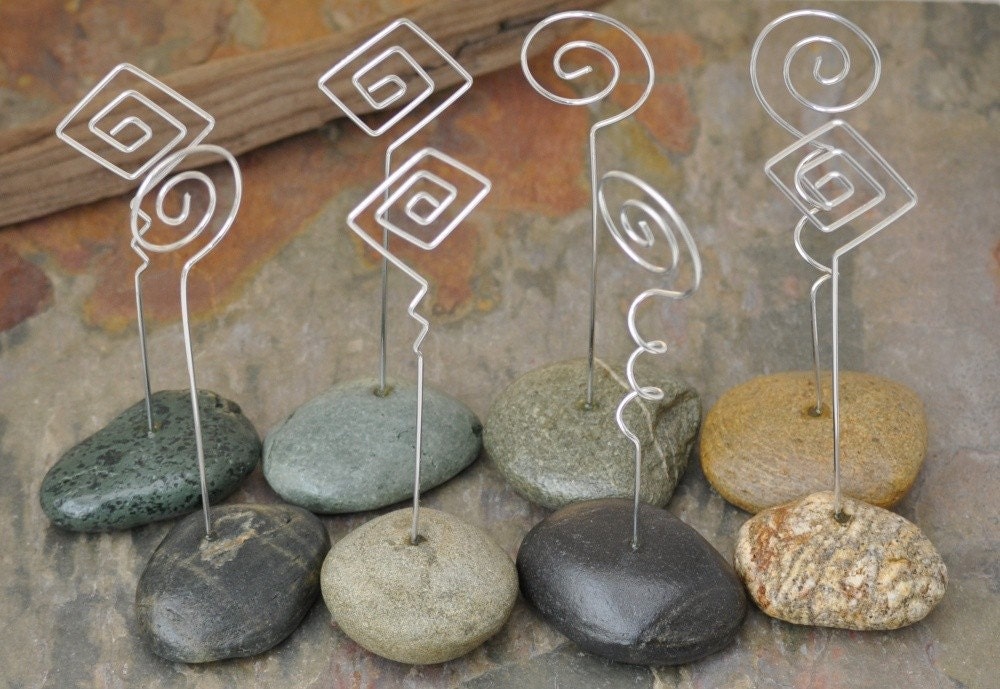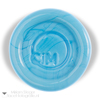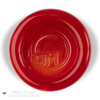
Jolene x
Lampwork glass beads and tools, lampwork tutorials,, jewellery design, glass beads, soda lime glass

 It was lovely to log in to Etsy today and see a message there to let me know my work had been featured. It is such a thrill when that happens. A big thank you to Aimee of Aimees Rock Works for putting my Sleeping Beauty beads in her glittery, girly, magpie’s dream of a gallery.
It was lovely to log in to Etsy today and see a message there to let me know my work had been featured. It is such a thrill when that happens. A big thank you to Aimee of Aimees Rock Works for putting my Sleeping Beauty beads in her glittery, girly, magpie’s dream of a gallery.  | |
Beach Rock and Wire Place Card Holders |
 |
| FIMO beads with flower and leaf cane |
 |
| FIMO beads with flower and leaf cane |
 |
| Flower Cane |
 |
| Slices of rose cane |
 These pictures show simple spacers made from Phoenix, some I have struck and some I have left unstruck for comparison. For the beads that I struck, I allowed them to cool outside of the flame until they lost their glow and introduced them to the top flame again to bathe them in gentle heat. The colour of the struck beads is a rich soft orange opaque which was easy to achieve with a single strike. I am intrigued by the large variation in colour that can be seen in these images though comparing the struck and un-struck beads. I think that Phoenix would be an exciting glass to use for sculptural creations.
These pictures show simple spacers made from Phoenix, some I have struck and some I have left unstruck for comparison. For the beads that I struck, I allowed them to cool outside of the flame until they lost their glow and introduced them to the top flame again to bathe them in gentle heat. The colour of the struck beads is a rich soft orange opaque which was easy to achieve with a single strike. I am intrigued by the large variation in colour that can be seen in these images though comparing the struck and un-struck beads. I think that Phoenix would be an exciting glass to use for sculptural creations.
 I made these sweet and simple little spacer beads from CiM Ginger. One of the larger beads has dots of silvered ivory stringer (sis) too. The fine silver leaf used to create the organic patterns and striations in the Effetre ivory stringer have not fumed or reacted with the base of Ginger at all which tells me that it would be a great glass to use if you were looking for a light and neutral non reactive base glass for your bead design.
I made these sweet and simple little spacer beads from CiM Ginger. One of the larger beads has dots of silvered ivory stringer (sis) too. The fine silver leaf used to create the organic patterns and striations in the Effetre ivory stringer have not fumed or reacted with the base of Ginger at all which tells me that it would be a great glass to use if you were looking for a light and neutral non reactive base glass for your bead design. This lovely necklace uses both struck and unstruck Phoenix with Ginger spacers to show a progression in both colour and tone. I have etched the surface of my spacers to compliment the wonderful hand crafted terracotta feature button by Tan Grey of tanofcourse. The bead and button elements have been tied together with a sumptuous sugar pink hand dyed silk ribbon by Diane Turton of SowZerE Designs. This necklace is a gift for a good mate of mine for Christmas, hope she likes it.
This lovely necklace uses both struck and unstruck Phoenix with Ginger spacers to show a progression in both colour and tone. I have etched the surface of my spacers to compliment the wonderful hand crafted terracotta feature button by Tan Grey of tanofcourse. The bead and button elements have been tied together with a sumptuous sugar pink hand dyed silk ribbon by Diane Turton of SowZerE Designs. This necklace is a gift for a good mate of mine for Christmas, hope she likes it.

 Poi is a beautiful muted dark lilac. Either which way, this colour is lush.
Poi is a beautiful muted dark lilac. Either which way, this colour is lush.


 I have been working very hard to improve my photography and product presentation over the last few months and it is such a lovely treat to find yourself (or rather, your work) chosen and featured in an Etsy treasury by a fellow Etsian. A big thank you to Michelle Madonna of plantology for putting my seaglass beads front and center in her beautiful treasury.
I have been working very hard to improve my photography and product presentation over the last few months and it is such a lovely treat to find yourself (or rather, your work) chosen and featured in an Etsy treasury by a fellow Etsian. A big thank you to Michelle Madonna of plantology for putting my seaglass beads front and center in her beautiful treasury.  |
Zen Xerographica Arrangement In Glass Bowl |

 I found that I had to treat Fremen very harshly by superheating for a prolonged period of time to get any sign of the surface sparkles and fizz that tells me the glass is boiling. Unlike with Pulsar though, there is no sign of surface pitting on my beads once they have cooled. Fremen is a wonderfully well behaved glass when I work it in a cool flame.
I found that I had to treat Fremen very harshly by superheating for a prolonged period of time to get any sign of the surface sparkles and fizz that tells me the glass is boiling. Unlike with Pulsar though, there is no sign of surface pitting on my beads once they have cooled. Fremen is a wonderfully well behaved glass when I work it in a cool flame. Fremen is described as an opaque sky blue - perhaps this is why I couldn't resist teaming it with fluterby murrini. The dreamy look of these beads means that encasing and etching Fremen is a combination I am sure to come back to over and over again.
Fremen is described as an opaque sky blue - perhaps this is why I couldn't resist teaming it with fluterby murrini. The dreamy look of these beads means that encasing and etching Fremen is a combination I am sure to come back to over and over again.
 My daughter Ruby says bit-some a lot at the minute, a bit-some Peppa Pig, a bit-some cuppee tea.....here are my bit-some thoughts on Pulsar.
My daughter Ruby says bit-some a lot at the minute, a bit-some Peppa Pig, a bit-some cuppee tea.....here are my bit-some thoughts on Pulsar. Pulsar has a reputation for pitting. I have tested glass from two different batches and found that both did pit when I worked with them.
Pulsar has a reputation for pitting. I have tested glass from two different batches and found that both did pit when I worked with them. I tend to work fairly hot and it seems that Pulsar cannot stand up to prolonged heating in an intense flame without it boiling and bubbling up. This is what causes the pitting and tiny holes on the surface of some of my beads. To get the best from this beautiful transparent blue glass I found that I needed to melt Pulsar more slowly, turning my torch down a bit and working in the cooler tip of the flame. I think that Pulsar looks beautiful with blue highlight mica.
I tend to work fairly hot and it seems that Pulsar cannot stand up to prolonged heating in an intense flame without it boiling and bubbling up. This is what causes the pitting and tiny holes on the surface of some of my beads. To get the best from this beautiful transparent blue glass I found that I needed to melt Pulsar more slowly, turning my torch down a bit and working in the cooler tip of the flame. I think that Pulsar looks beautiful with blue highlight mica. 
 Mostly though I think that Pulsar is made to be etched - it puts me in mind of tumbled seaglass and the ground surface of antique cobalt glass apothecary jar stoppers.
Mostly though I think that Pulsar is made to be etched - it puts me in mind of tumbled seaglass and the ground surface of antique cobalt glass apothecary jar stoppers. None of these spacers have been struck, you can clearly see the transparent yellow areas on many of these beads which is what Sangre looks like before you reheat it to strike to red. I find though that Sangre does strike for me fully and evenly the first time that I bring it back to the flame. The picture to the left was taken indoors under artificial lighting and the glass looks darker, like toffee apple caramel rather than the vibrant and juicy red that it's true transparent shade. The image below was taken indoors also but is lit with a daylight lamp (10,000 lux) and looks much closer to true colour.
None of these spacers have been struck, you can clearly see the transparent yellow areas on many of these beads which is what Sangre looks like before you reheat it to strike to red. I find though that Sangre does strike for me fully and evenly the first time that I bring it back to the flame. The picture to the left was taken indoors under artificial lighting and the glass looks darker, like toffee apple caramel rather than the vibrant and juicy red that it's true transparent shade. The image below was taken indoors also but is lit with a daylight lamp (10,000 lux) and looks much closer to true colour. Next I made a large focal sized bead, using just Sangre, in a strong reduction flame. The results were very interesting; streaks of light grey/blue are clearly visible on the bead after kiln annealing. This bead is also totally opaque, the longer working and repeated striking has taken Sangre from unstruck two tone transparent and on to fully opaque which personally I like. It gives Sangre working properties unique in the 104 palette and is a very versatile glass
Next I made a large focal sized bead, using just Sangre, in a strong reduction flame. The results were very interesting; streaks of light grey/blue are clearly visible on the bead after kiln annealing. This bead is also totally opaque, the longer working and repeated striking has taken Sangre from unstruck two tone transparent and on to fully opaque which personally I like. It gives Sangre working properties unique in the 104 palette and is a very versatile glass

 |
| Dots, dots, dots |
 | ||
| Stone Ground |
 |
| Wood grain effect focal with fine silver detail |
 |
| Wood grain effect focal with fine silver detail |
 | ||
| Canyon de Chelly |

 |
| Silvered Tuxedo stringer over Khaki |
 |
| Silvered Tuxedo stringer over Stone Ground and Maple |
 |
| Silvered Tuxedo stringer over Stone Ground and Maple |
 |
| Fumed Tuxedo/Silvered Tuxedo stringer |